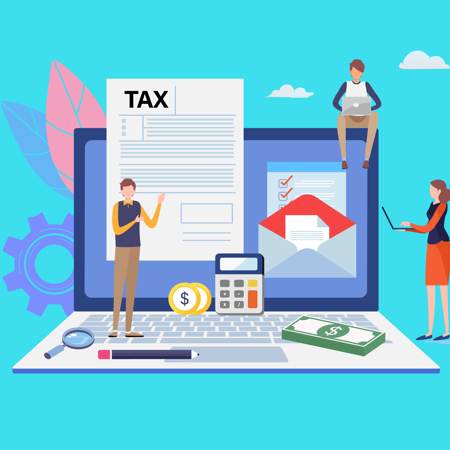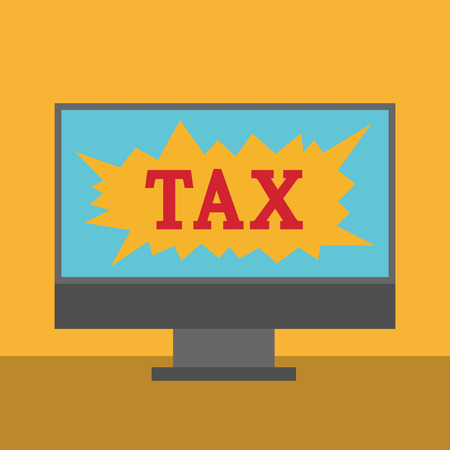Making Tax Digital for landlords: What you need to know as a landlord
 If you are a landlord, you will understand that you have certain responsibilities for which you are accountable under the law. These include fire, health and safety regulations; certifications for energy performance, gas and electrical equipment, as well as specific duties with respect to your tenant(s). Further to this, as a landlord, you are obligated to manage your finances and accounts for the purpose of tax reporting.
If you are a landlord, you will understand that you have certain responsibilities for which you are accountable under the law. These include fire, health and safety regulations; certifications for energy performance, gas and electrical equipment, as well as specific duties with respect to your tenant(s). Further to this, as a landlord, you are obligated to manage your finances and accounts for the purpose of tax reporting.
Her Majesty’s Revenue and Customs’ Making Tax Digital initiative is now in effect for VAT registered businesses earning above the threshold (£85,000) and will soon become ubiquitous for all businesses in England and Wales – currently set down for April 2020. What this means, is that all businesses will be required to submit mandatory quarterly tax returns (as well as the standard annual return) to HMRC as of this date, through the use of a Government recognised and sanctioned cloud accounting software, including landlords.
Migrating your finances may seem like a daunting task, and there will be a number of changes felt by businesses with established bookkeeping and tax lodgement systems already in place, but before we get into the specifics, TaxAgility, London’s local accountants for small business, will take a brief look at the various taxes applicable to landlords.
What taxes are landlords liable for?
When property owners let out their property, they become liable for several taxes and contributions:
- Income Tax – If an individual lets property in the UK, they are subject to income tax. The first £1,000 of income from property rental is tax-free and known as a ‘property allowance’. For individuals letting out a property that they personally own, rental income has to be reported if it is 1) £2,500 to £9,999 after allowable expenses or 2) £10,000 or more before allowable expenses.
- National Insurance – This is required to be paid by landlords who are deemed to be ‘running a business’. A landlord is deemed to be 'running a property business' if 1) being a landlord is their main job, 2) they rent out more than one property and 3) they’re purchasing new properties for the purpose of renting them out. If a landlord meets these requirements and is categorised as running a business under such parameters, they are liable for Class 2 National Insurance, as long as their annual profits exceed £5,965.
- Stamp Duty Land Tax (SDLT) – This is a lump-sum tax that is payable when buying land or property that amounts to more than a certain value. The current SDLT threshold is £125,000 for residential properties and £150,000 for non-residential land and properties, with rates increasing depending on the value of the property.
- Capital Gains Tax – Landlords will be liable for Capital Gains Tax (CGT) if they sell a property that has increased in value. The tax is only payable on the profit you have made, not the total amount received. Types of properties that are incorporated under CGT include buy-to-let properties, business premises, land and inherited property.
- Value Added Tax (VAT) – Lease or sale of residential and commercial properties is usually VAT exempt, but a commercial property owner may ‘opt to tax’ the property for the purpose of recovering VAT charged to the property.
Making tax digital (MTD) for landlords
Instituted in 2018, HMRC has integrated their Making Tax Digital scheme sequentially with respect to the degree of difficulty some businesses might encounter when migrating their finances to online cloud accounting platforms. In essence, Making Tax Digital is an initiative designed to make tax administration more effective, efficient and easier for taxpayers through a fully digital tax system. Instead of filing an annual self-assessment tax return, taxpayers and businesses are required to keep records digitally and send quarterly updates of their finances to HMRC. They will also need to send in a final report at the end of the tax year, together with a claim for any reliefs or allowances.
According to the government’s timetable, as it stands, all businesses including landlords will have to switch to meet the requirements of MTD by April 2020. This means that everyone from large conglomerates and corporations to small businesses and startups will be lodging their financial and fiscal data to HMRC through digital accounting software. In a nut-shell, MTD requirements stipulate that by April 2020, landlords will have to:
- Maintain their records digitally using MTD-compatible software
- Report summary information to HMRC every quarter via a digital tax account
- Make an end of year tax return declaration
Making the transition to the cloud is not as complicated as you might think, and many of the software platforms available are incredibly intuitive and straightforward. Digital tax accounts are accessed via a secure online portal where a property business or individual landlord can see all of their tax details. All of the records will be ‘cloud-based’, meaning that they reside online, and are accessed through commercially available third-party accounting software and mobile apps. Many of these softwares provide easy to understand insights into the financial health and positioning of businesses, however, using them can often be a burden for landlords and property ownership businesses that don’t have the time to also manage their own accounting functions. This is where TaxAgility can help. As Gold Partners of Xero, one of HMRC’s recognised MTD accounting software, we have a proven track record of managing finances and accounts on the cloud and are also able to assist you with the move to digital.
Making tax digital FAQs for landlords
Does it matter if I am a residential or commercial landlord?
It might. If you’re an incorporated property lessor or landlord with an income over £85,000 that has opted in for VAT, you will need to be MTD-compliant from 1 April 2019. If you are a residential landlord, then you won’t have to become MTD-complaint until April 2020, when MTD for income tax comes into effect for all businesses.
What if I rent out multiple properties? Will I have to report for each property or just the business as a whole?
Where multiple properties are held within a business or by an individual landlord, income and expenditure only has to be recorded and submitted for the property business as a whole and does not have to be allocated individually. However, it is good practice in such circumstances to keep a record of the income and expenditure of each property so as to keep comprehensive records and avoid a possible audit by HMRC.
What if I have joint ownership of the property?
There is a difference between properties owned by a partnership or simply owned jointly, such as by a married couple. The principles of the proposed system for partners and partnerships are as follows:
- The partnership, rather than each partner, will be responsible for the requirements of Making Tax Digital.
- A nominated partner will fulfil these obligations.
- There will be an option for the nominated partner to push quarterly summary information of their share of the profit to each partner’s digital tax account. With this option, each partner would have an estimate of their profit to date in the tax year.
- When the end of year declaration is made, the nominated partner will be obliged to push each partner’s share of profits to their digital tax accounts.
How TaxAgility can help landlords transit to MTD
If you’ve maintained a paper-and-binders kind of approach to record keeping, you may want to approach an accountant for small businesses for assistance. A local London accountant like TaxAgility can help clients to subscribe to a compatible online ‘cloud’ tax accounting software package, such as Xero. Apart from helping with the MTD transition, TaxAgility also specialises in advising landlords to:
- identify special tax reliefs available to property owners
- purchase property with tax-efficiency in mind
- track tax changes that will impact on your cash flow, tax position or accounting practices
- prepare and submit landlord accounts and personal tax returns in a timely and accurate manner
- remember any interim and final payments through the year
- invest rental income
TaxAgility has worked with Xero since 2011 as a gold partner and certified Xero adviser. This means that our clients get exclusive access to a whole host of benefits, including 25% discounts on Xero subscriptions. As experts in Xero, TaxAgility can help make your transition to Making Tax Digital as smooth as possible. Take advantage of the free 30-day trial and contact us today on 020 8108 0090.
This post is intended to provide information of general interest about current business/ accounting issues. It should not replace professional advice tailored to your specific circumstances.
If you liked this article, check out:
Xero: How Xero can help with Making Tax Digital
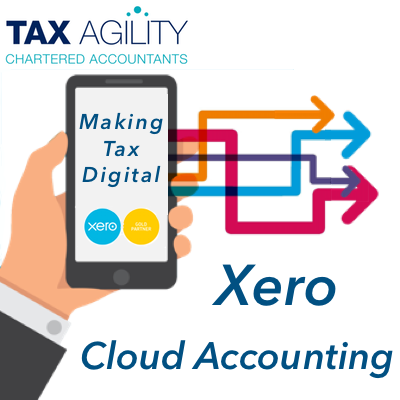 Making Tax Digital is the Government’s imminent legislative initiative that comes into effect for VAT-registered businesses earning above the VAT threshold (£85,000) on 1 April 2019. This will require qualifying businesses to migrate their current financial recording systems to a dedicated digital, cloud accounting platform, and will become ubiquitous for all businesses by April 2020. This means that sole traders, partnerships, landlords and commercial property owners and trading companies and corporations will all be subject to these changes in little over a year.
Making Tax Digital is the Government’s imminent legislative initiative that comes into effect for VAT-registered businesses earning above the VAT threshold (£85,000) on 1 April 2019. This will require qualifying businesses to migrate their current financial recording systems to a dedicated digital, cloud accounting platform, and will become ubiquitous for all businesses by April 2020. This means that sole traders, partnerships, landlords and commercial property owners and trading companies and corporations will all be subject to these changes in little over a year.
It’s a big change. Under Making Tax Digital, finances are required to be reported quarterly rather than annually, though the annual tax return is still included under this. Essentially, Making Tax Digital represents a more effective way for the Government to stay updated on companies’ financial reporting – providing less room for error, miscalculation and fraud when it comes to processing tax.
Transitioning your business’s finances to the cloud sounds like a complex and calculated process and indeed it can be unless you have the right help. The scale and scope of the operation depend on the size of your business and the quality of your existing bookkeeping, but some cloud accounting platforms exist that can facilitate a quick and painless migration such as Xero.
In this post, we take a look at the various ways in which Xero can improve your business’s financial accounting and streamline the bookkeeping and accounting process.
Why choose Xero?
There are a number of reasons for choosing Xero as your dedicated cloud-accounting platform, all of which stand to benefit your company and its financial position and stability. Aside from the obvious benefit of being listed by HMRC as a compatible Making Tax Digital platform, using Xero’s accounting software can assist with:
Simplifying and streamlining your accounts
With an intuitive and intelligent interface, Xero is the perfect solution for businesses looking to refine their approach to bookkeeping through clear, concise accounting. The Xero system is simple and straightforward to use, and as it’s built specifically for small business owners and operators, it means you’re not required to have an in-depth knowledge of accounting in order to use it, understand it and in turn, better understand your business’s finances.
Understanding your business’s financial position
By engaging with Xero’s illuminating dashboard overview, you’re provided with a clear, comprehensive and unobstructed view of your business’s financial stability. From automated daily bank feeds to outstanding invoices owed, Xero is compatible with a number of third-party technologies and platforms, and its dashboard offers a holistic insight into your finances - giving you the tools to better understand your business’s positioning and health.
Unadulterated access
With a strictly digital hosting network, Xero’s client data is stored entirely on the cloud. This means that you can access the platform from anywhere in the world; the only requirement is an Internet connection and a compatible device. Further to this, you don’t need to back up your files when using Xero. The secure servers are in place with all necessary redundancy measures, so accessing everything is a remarkably painless affair.
Improving your business’s operations
As a cloud-based platform, Xero provides freedoms that many small businesses once thought out of reach or unattainable. With no need for IT maintenance, no over complicated setup process or the tediousness associated with having to serve a client with a physical invoice the week after completing a job, Xero can make your business a smoother, simpler operation.
Better security of your financial data
Incorporating complex encryption technology into the storage and transference of your business’s financial data, Xero’s cloud accounting technology is a reliable and secure means of keeping your accounts in order. With your data encrypted in both storage and sending phases, any records that you submit online are efficiently and effectively safeguarded - which means your business and its interests are also better protected.
Aligning yourself with future Making Tax Digital Requirements
Despite coming into effect for VAT-registered businesses above the threshold on 1 April 2019, future instalments of the MTD legislation are imminent and will incorporate other forms of business. The ramifications of this are yet to be seen, but depending on how the introduction of MTD for VAT-registered business pans out, there may be changes to the existing and planned tax lodgement processes - so embracing the cloud and familiarising yourself with a platform such as Xero is imperative.
How can TaxAgility help?
As a gold partner of Xero, TaxAgility is privy to a handful of benefits that other tax agents and accountants aren’t. As London’s local accountants for small businesses, we’ve been working with Xero since 2011 and as such, have cultivated a reputation for being experts when it comes to using their digital cloud accounting software – becoming certified Xero advisors in the process.
This certification means that we’re able to provide our clients with special benefits when it comes to subscribing to Xero and using their technology, as well as being able to offer discounts of up to 25% for new small businesses looking to make the switch. Not only can we make it more affordable for your business to migrate its finances to the cloud, but TaxAgility is also able to provide bespoke assistance for businesses whose transition might be more complex or complicated – we’re specialists in start-up and small business accountancy and have a proven track record of delivering reliable accounting advice.
If you have any queries as to the processes by which you can migrate your business’s finances and accounts to the cloud, or would like to get in touch regarding setting up with Xero, TaxAgility can advise and assist regardless of your business type or structure. Moreover, if you’re a small- or medium-sized venture that is interested in securing the services of a qualified, specialist accountancy firm familiar with your needs and your area, London’s local small business accountants, TaxAgility, can help.
Feel free to get in touch on 020 8108 0090 and find out how you can better manage your business and improve your business’s financial positioning.
If you found this helpful, you might also like:
- Xero accounting: Update your business
- How Xero can help contractors in the UK
- Making Tax Digital for landlords: What you need to know as a landlord
This post is intended to provide information of general interest about current business/ accounting issues. It should not replace professional advice tailored to your specific circumstances.
Digital Tax: what you need to know

October 31 2018 was the deadline for submitting paper self-assessment tax returns. The next deadline (for online submissions) is January 1 2019, then on April 1 2019 the Making Tax Digital scheme (MTD) will make online VAT tax returns mandatory for all businesses above the VAT threshold (£85,000). In less than six months, your taxes will be digital whether you are ready for it or not. As experts in this field, the tax accountants at TaxAgility have compiled together all the information you need to know.
What’s actually required?
On April 1 2019, all businesses above the VAT threshold will no longer be able to keep manual records of their VAT legally. From this point onwards, digital records must be created and stored in appropriate software such as spreadsheets. The data must be able to connect to HMRC via an Application Programming Interface (API). In this case, the API is a specialist accounting software that is compatible with HMRC’s systems and allows for the data to be transferred directly, rather than the figures being manually entered into the HMRC portal.
The software used must also meet other specific requirements, including but not limited to:
- It must be able to keep the required records in digital form and preserve them for up to six years
- It must be able to create a VAT return from digital records (it cannot rely on manual records whatsoever)
- It must be able to provide HMRC with additional data on a voluntary basis
- It must be able to receive information from HMRC about the business’ compliance record.
In most cases, the software you choose should already be approved by the government, in which case it will be capable of this already. However, if you choose independent software, then you will need to know its capabilities before you agree on using it.
A helping hand
Don’t panic if this all sounds overwhelming to you, because there are some tools you can use to help yourself out.
As a business owner, you may have already received an invitation to try the pilot scheme for MTD on a voluntary basis. Although the objective is to help test the systems, getting involved now can prepare you for the changes sooner than later.
On the government website, there is a list of compatible API software that you can use to submit VAT returns. Any of the programs from this list will have all the necessary functions, and you can theoretically choose any one of them. However, some have more support than others: users of Xero, for example, can benefit from the specialist cloud accounting support we offer.
TaxAgility can help with MTD
At TaxAgility, we’ve worked with Xero for such a long time that we’re now gold partners, a position that gives us several benefits we can share with our clients.
For more information on how Xero can help your business into the next era, give us a call on 020 8108 0090 or use our online form.
If you enjoyed this article, you might want to take a look at:
3 easy tips to make the most out of cloud accounting
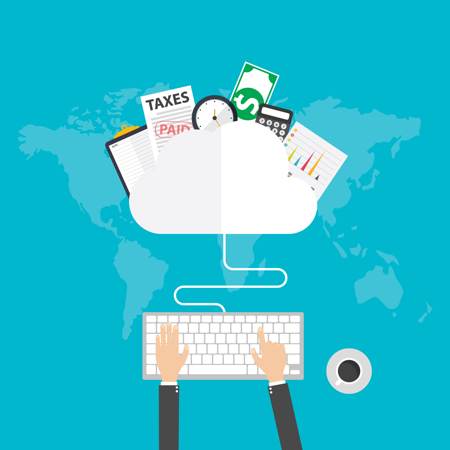
The government’s Making Tax Digital scheme is fast approaching and with all businesses expected to be reporting their tax online by April 2019, time is running out to switch to cloud accounting. At TaxAgility, we have years of experience with Xero and Freeagent accounting software, and we’ve got a few easy tips to make your transition that much smoother.
1. Make sure everyone is involved
When making a transition from an accounting software installed in your local machines to a cloud-based accounting software, you need the right support, particularly if you have an immense amount of data to transfer. Getting your bookkeepers and relevant staff involved as early as possible is key. Don't underestimate the scale of change required either - get help from experts if you think the switch will disrupt your daily operations.
2. Choose the right software
There are many options for cloud accounting software on the market right now and each has its own advantages and disadvantages. For example, if you already understand some basic accounting principles, you may choose more sophisticated software like QuickBooks. However, if you want something that is easy to use without having to learn any accounting principles, consider Xero. Other features to consider depend on your set-up, like if you need to have a payroll function or if you would like to integrate inventory management with an accounting system.
At TaxAgility, we’re gold partners with Xero, which gives us access to exclusive benefits that we can share with you. Our certified Xero experts are also available to help you get the most out of your software. You can learn more about Xero in this post: "Xero Accounting: update your business".
3. Don’t be afraid of asking for help
Just because you’re on track to get everything sorted, doesn’t mean you shouldn’t ask for help. One of the greatest benefits of cloud accounting is the streamlining effect it can have on your business when executed properly. Once integrated into your operations, it would be foolish not to take advantage of it.
Although most cloud accounting software is designed with ease of use in mind, many offer add-ons to allow each business to tailor the software to their own needs further. Professional advice can help you set up the add-ons you may find useful in the future, and get you into the necessary habits that will keep everything running smoothly.
Talk to cloud accounting experts
When you do decide to make the transition, the structure you end up with is likely going to be the one you rely on for many years to come. It’s vital to get it right the first time around, especially as it’s going to dictate how you manage your business finances and taxes going forward.
To find out more about how our tax accountants can get you comfortable with cloud accounting, get in touch on 020 8108 0090 or fill out our Online Form.
If you liked this article, take a look at:
Making Tax Digital pilot is now open to all self-employed UK taxpayers
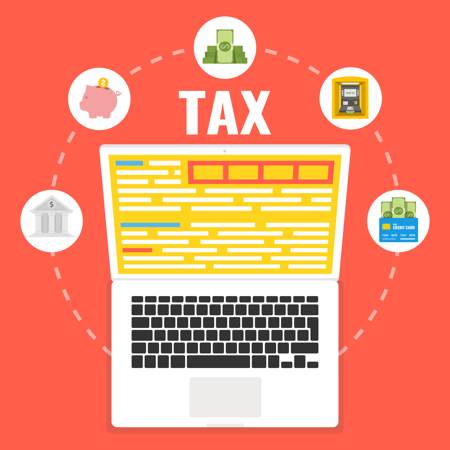 Join the government’s pilot and start sending regular income tax updates through HMRC’s Making Tax Digital system, if you’re self-employed.
Join the government’s pilot and start sending regular income tax updates through HMRC’s Making Tax Digital system, if you’re self-employed.
The tax authority’s Making Tax Digital (MTD) system will be rolled out in 2020, and last year a limited pilot program was launched to test the new digital system that will require businesses to report taxes digitally. The pilot has now been extended to all self-employed taxpayers in the UK. This means if you’re a sole trader with income from one business and your current accounting period ends after 5 April 2018, you can volunteer to file your income tax updates to HMRC digitally via the compliant software providers supporting the pilot. The pilot is also said to open up next month to unincorporated landlords.
What software can self-employed UK taxpayers use for the pilot?
HMRC’s list of software providers at the time of writing only contains two entries – IRIS and Rhino, but further accounting software companies are expected to appear on the list as the pilot progresses. Compliant software allows digital record keeping of income and expenses, sending quarterly updates to HMRC and viewing tax estimates from HMRC regarding the tax you owe. This is based on the updates provided by the software.
If you are using different software for your accounting, it may still be possible to pull client information directly from that software into IRIS and RHINO, but you will need to check with your software provider whether they have a partnership in place.
Why join the pilot?
MTD is coming into force eventually, and by signing up now you can not only help the government test this new tax service, but it’s also a chance to get comfortable with the new system yourself.
If your only source of income is through your jobs as a self-employed individual, by signing up to the pilot, you will not need to worry about filing a Self Assessment tax return at the end of the year. Instead, you’ll see the taxes owed in real time as the year progresses.
You can sign up for the pilot using your Government Gateway user ID and password, which is the same one you use for the Self Assessment online service.
Sending MTD updates using your accountant
As accountants for small business owners, we’ve been providing MTD transition support to small businesses in London since the rollout of the pilot scheme last year, and are happy to extend our services to the self-employed. Integrating IT systems can be challenging and time-consuming and without IT support, you may struggle with HMRC’s accounting software. We understand this at TaxAgility and also know that dealing with new and unfamiliar software adds extra work to your day. We work with XERO, a cloud-based accounting software, to prepare our clients of all sizes for a smooth transition.
Give us a call on 020 8108 0090 today to hear more about how our small business accountants at TaxAgility can help you.
HMRC Trialling New Making Tax Digital Scheme
 As most businesses should be aware of by now, HMRC’s new ‘Making Tax Digital’ (MTD) initiative is due to begin in April 2018, where companies are required to report tax digitally each quarter.
As most businesses should be aware of by now, HMRC’s new ‘Making Tax Digital’ (MTD) initiative is due to begin in April 2018, where companies are required to report tax digitally each quarter.
At the beginning of this month, HMRC began a pilot program to test out this new digital system. The pilot involves some businesses and agents that have been invited by HMRC to sign up for the trial. It is expected that those participated in the trial would be able to test out the new accounting software to record their business income and expenses and send in summary reports.
The trial is not without its critics though, even the Treasury has raised concerns about the value of information collected by an invitation-only approach. The treasury cited concerns that those companies more likely to be affected by the new MTD scheme could decline to participate. However, HMRC has said that the pilot would involve smaller numbers of companies initially, but later a more substantive trial involving hundreds of thousands of companies would be rolled out prior to launching the new systems.
Amid these, there is a piece of good news for smaller businesses who aren’t VAT registered; HMRC has extended the deadline and you will only need to start filing quarterly digital updates from April 2019. Businesses with a turnover of less than £10,000 will be exempt and not be required to file digitally.
Not invited? You can still trial MTD
For businesses that were not invited to take part in either pilot, you would still be able to use the new software if you wished, to test out record keeping and integration with any existing systems.
In addition, the Chancellor has previously stated that businesses using existing spreadsheet software to maintain their records would be able to continue to do so, but that their software must be able to interact with HMRC’s new accounting software. If not then they will have to change their spreadsheet software to one that is compatible.
An Integration Nightmare?
If you have experienced integrating different IT systems before, then you know first-hand the challenges. We’re concerned that businesses, particularly the smaller ones without any internal IT support, may struggle to integrate their spreadsheet software with HMRC’s new accounting software. If you think this is an area which you need help, talk to us today. We can help.
At TaxAgility, we also understand that MTD may be adding some extra work for you the business owner. It may be a challenge for you to fill out quarterly reports using new software that you aren’t familiar with.
The good news is, our dedicated team at TaxAgility has been helping clients planning for the MTD transition. We work with XERO, a cloud-based accounting software, to prepare our clients of all sizes for a smooth transition. With us, you will get honest discussions free of jargon. There won’t be any hidden agenda or hidden charges.
Give us a call on 020 8780 2349 today, or fill out the contact form.
Making Tax Digital: Welcome Change or Worrying Burden?
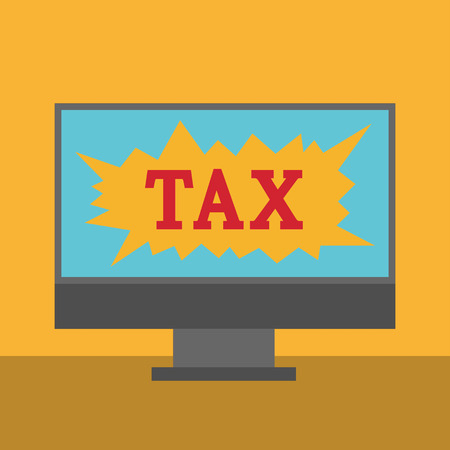 The government’s Making Tax Digital plan was first touched upon during Budget 2015, then again in December of last year when they launched the ‘Making Tax Digital Roadmap’ in an effort to explain how their plan to turn HM Revenue and Customs (HMRC) into one of the most “digitally-advanced tax administrations in the world by 2020,” would be achieved.
The government’s Making Tax Digital plan was first touched upon during Budget 2015, then again in December of last year when they launched the ‘Making Tax Digital Roadmap’ in an effort to explain how their plan to turn HM Revenue and Customs (HMRC) into one of the most “digitally-advanced tax administrations in the world by 2020,” would be achieved.
But the question remains, despite all of the government’s assertions that Making Tax Digital will reduce the taxpaying burden for all individuals (small business owners, employed individuals with other income, retired individuals, and more), should this be seen as a welcome change for taxpayers or indeed a worrying burden?
With the consultation period on these changes due to run until 7 November of this year, here at TaxAgility we’ve looked at what Making Tax Digital may mean for you, and how we can help you to navigate these changes.
Who is Affected
If you’re a small or medium-sized business (SME) owner, self-employed, or a landlord with turnover over £10,000 per year, you will be affected by these changes. This last point refers to all landlords making over £10,000 per year (gross), even if you’re in full-time employment and you just rent out a property on the side.
There are also edge-cases that will also be affected, such as pensioners whose pension exceeds their personal allowance.
What is Required
If you’re affected by Making Tax Digital you will be required to have a digital tax account through which you will report your accounts to HMRC every three months (once a quarter) under standard categorised headings (sales, expenses, etc).
This will no doubt be a burden, as despite what the government wants to think tax is not at the forefront of most people’s minds on a day-to-day basis; that’s what accountants are for. That said, the government is correct in its assumption that more frequent reporting by those who don’t work alongside an accountant will help to keep them on top of their tax liabilities.
Is Big Brother Watching?
Though there’s really no need to be paranoid, especially if you have nothing to hide, this is a fair question and one that’s come up consistently since the government announced their ‘Making Tax Digital Roadmap’ back in December of last year.
It’s certainly true that the more we use our smartphones, tablets, and laptop computers to digitise our records and store them in ‘the cloud’ the more opportunity there will be for this data to be used against us should it get into the wrong hands. And for those of us who grew up before the computerisation of everything, the idea of taking photographs of our receipts and uploading them to the internet can seem somewhat daunting. But from working with computerised accounting software here at TaxAgility for many years we can tell you that so long as you’re sensible, computerised software is both safe and convenient.
Experienced Tax Accountants
To speak with a professional accountant to discuss the government’s upcoming Making Tax Digital changes, or for anything else, contact us today on 020 8780 2349 or get in touch with us via our contact page to arrange a complimentary, no obligation meeting.

